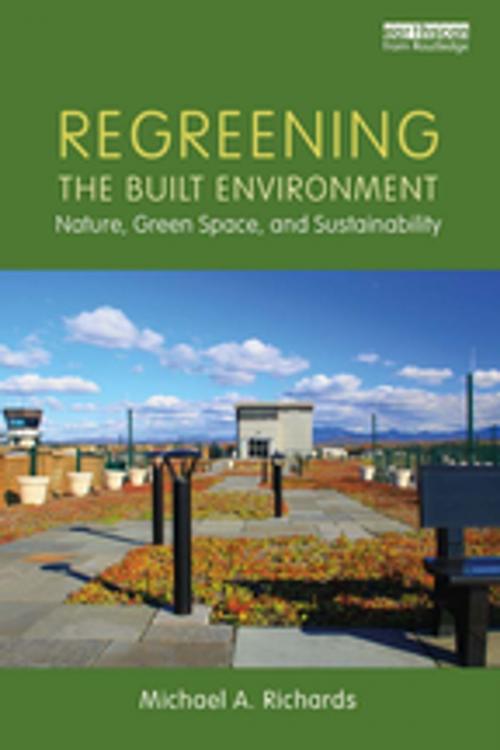Regreening the Built Environment
Nature, Green Space, and Sustainability
Nonfiction, Science & Nature, Science, Biological Sciences, Environmental Science, Art & Architecture, Architecture| Author: | Michael A Richards | ISBN: | 9781351764780 |
| Publisher: | Taylor and Francis | Publication: | July 6, 2017 |
| Imprint: | Routledge | Language: | English |
| Author: | Michael A Richards |
| ISBN: | 9781351764780 |
| Publisher: | Taylor and Francis |
| Publication: | July 6, 2017 |
| Imprint: | Routledge |
| Language: | English |
Regreening the Built Environment examines the relationship between the built environment and nature and demonstrates how rethinking the role and design of infrastructure can environmentally, economically, and socially sustain the earth.
In the past, infrastructure and green or park spaces have been regarded as two opposing factors and placed in conflict with one another through irresponsible patterns of development. This book attempts to change this paradigm and create a new notion that greenspace, parks, and infrastructure can indeed be one in the same. The case studies will demonstrate how existing "gray" infrastructure can be retrofitted with green infrastructure and low impact development techniques. It is quite plausible that a building can be designed that actually creates greenspace or generates energy; likewise, a roadway can be a park, an alley can be a wildlife corridor, and a parking surface can be a garden. In addition to examining sustainability in the near future, the book also explores such alternatives in the distant and very distant future, questioning the notion of sustainability in the event of an earth-altering, cataclysmic disaster.
The strategies presented in this book aim to stimulate discussions within the design profession and will be of great interest to students and practitioners of environmental studies, architecture, and urban design.
Regreening the Built Environment examines the relationship between the built environment and nature and demonstrates how rethinking the role and design of infrastructure can environmentally, economically, and socially sustain the earth.
In the past, infrastructure and green or park spaces have been regarded as two opposing factors and placed in conflict with one another through irresponsible patterns of development. This book attempts to change this paradigm and create a new notion that greenspace, parks, and infrastructure can indeed be one in the same. The case studies will demonstrate how existing "gray" infrastructure can be retrofitted with green infrastructure and low impact development techniques. It is quite plausible that a building can be designed that actually creates greenspace or generates energy; likewise, a roadway can be a park, an alley can be a wildlife corridor, and a parking surface can be a garden. In addition to examining sustainability in the near future, the book also explores such alternatives in the distant and very distant future, questioning the notion of sustainability in the event of an earth-altering, cataclysmic disaster.
The strategies presented in this book aim to stimulate discussions within the design profession and will be of great interest to students and practitioners of environmental studies, architecture, and urban design.















